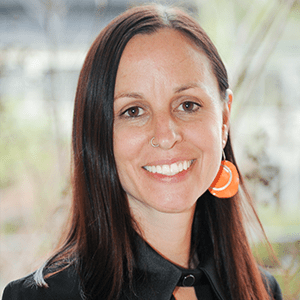1:30min
 A new workforce projections study commissioned by Optometry Australia has been released, providing critical insights to support workforce planning.
A new workforce projections study commissioned by Optometry Australia has been released, providing critical insights to support workforce planning.
Optometry Australia has launched the Optometry Workforce Projection Study report undertaken by the Centre for the Business and Economics of Health (CBEH), The University of Queensland (UQ). The report is part of Optometry Australia’s commitment to building a robust future for optometry by facilitating well-informed workforce planning.
The report forecasts the optimal supply of registered optometrists in the Australian workforce from 2025 to 2040. It provides key insights to support effective workforce planning and to ensure a robust workforce into the future.
These insights are based upon:
- A supply analysis, that forecasts the pool of qualified optometrists.
- An analysis of workforce supply against service utilisation projections, derived from current rates of service access.
- An analysis of workforce supply against population needs projections. That is, the eye care needs of the whole population that are within current scope of optometry practice, not just the needs of those who have previously accessed care.
Key findings from the Optometry Workforce Projection Study reveal:
- Based on service utilisation, we currently have an oversupply of optometrists and, if trends continue, we will have a high surplus of optometrists. If the rate at which optometrists are leaving the profession increases to just 10% – which isn’t unprecedented across other health professions – the gap between supply and demand narrows to almost reach equilibrium by 2040. [Note: The report cautions that that this approach underestimates the future demand for optometry services and subsequently overestimates a surplus within the workforce.]
- Critically, if everyone who needed eye care accessed the services they required, the current workforce would be unable to meet the populations’ full demand. Further, if the average rate of optometrists leaving the profession is maintained, or increases to 10% by 2040, the shortfall of optometrists compared to population need is projected to be in the thousands.

OA CEO Skye Cappuccio says the data highlights a significant disparity between the current level of optometry service utilisation and the true population need for optometric care.
‘Optometry Australia has a responsibility to the profession and to the community to work swiftly and strategically to ensure closer alignment between demand for services and population eye care needs,’ she said.
‘Promoting the full scope of our profession’s skillset and ensuring everyone with eye care needs accesses services is essential to closing this gap – this is how we ensure a robust, sustainable profession.
‘Optometry Australia’s myopia awareness campaign and pre-election push to reinstate two-yearly billing for MBS item 10910, are part of this, but they are not enough.
‘Alongside our work to enhance scope of practice and expand the settings across which optometrists are practising, we need a detailed understanding of demographics for whom the disparity between population need and service access are greatest. We also need targeted approaches to increase service access for each of these. Optometry Australia is convening a group of experts to spearhead this effort.’
Improving working conditions is critical to retention
The preliminary findings of the recent Flinders University research into optometry working conditions underscore that many optometrists are experiencing dissatisfaction and moral distress in the workplace. This brings a greater risk of optometrists leaving the profession.
UQ’s report highlights the significant impact increased numbers of optometrists leaving the workforce will have on our ability to meet population need. This means that if the profession does not improve workplace conditions for employee optometrists, we risk undermining our ability to meet population eye care needs over the next 15 years.
‘We’re calling on the sector to implement the recommendations of our position statement, and to ensure workplace practices that protect the integrity of clinical decision-making, promote optometrists’ well-being and facilitate fulfilling professional experiences,’ said Ms Cappuccio.
Stabilising workforce supply
Ms Cappuccio says that while focusing on increasing service access to match population need is important, seeking to increase workforce supply before an increase in actual service utilisation would be to a detriment of the profession and the community. She adds that OA will continue to oppose approaches that would increase workforce supply in the short term, including new optometry programs, and at the same time recognises that future planning must begin early and strategically.
Addressing maldistribution
Despite workforce oversupply, significant geographic maldistribution persists at the expense of regional, rural and remote communities. Ms Cappuccio says that this is not a simple issue of workforce size.
‘This demands multi-pronged responses that overcome barriers to, and incentivise, working rurally and with populations that have reduced access to care,’ she said.
‘We have initiated a program of work to better understand what combination of approaches is likely to be most impactful. We are committed to facilitating informed conversation on this issue across the profession and more broadly and chasing change to support better workforce distribution.
‘As a sector, we have the opportunity, and the responsibility, to ensure we proactively plan for a robust future workforce that is an appropriate size, well-supported and positioned to meet community needs. This study is an important tool to support well-considered workforce planning.’
Looking ahead, together
Next week, OA will convene an inaugural summit of leaders in the sector, to facilitate a conversation amongst those in positions to make a difference.
‘Together, we will discuss strategic workforce planning and the crucial need to improve workforce conditions,’ said Ms Cappuccio. ‘We look forward to sharing the outcomes of these discussions with our members.’
She encourages members to read the full Optometry Workforce Projection Study report, which includes detailed modelling and methodology.
‘Transparency about methodology and assumptions are critical to open discussion, particularly considering the divergent findings between previous workforce studies,’ she said.
The full Optometry Workforce Projection Study report is available here.